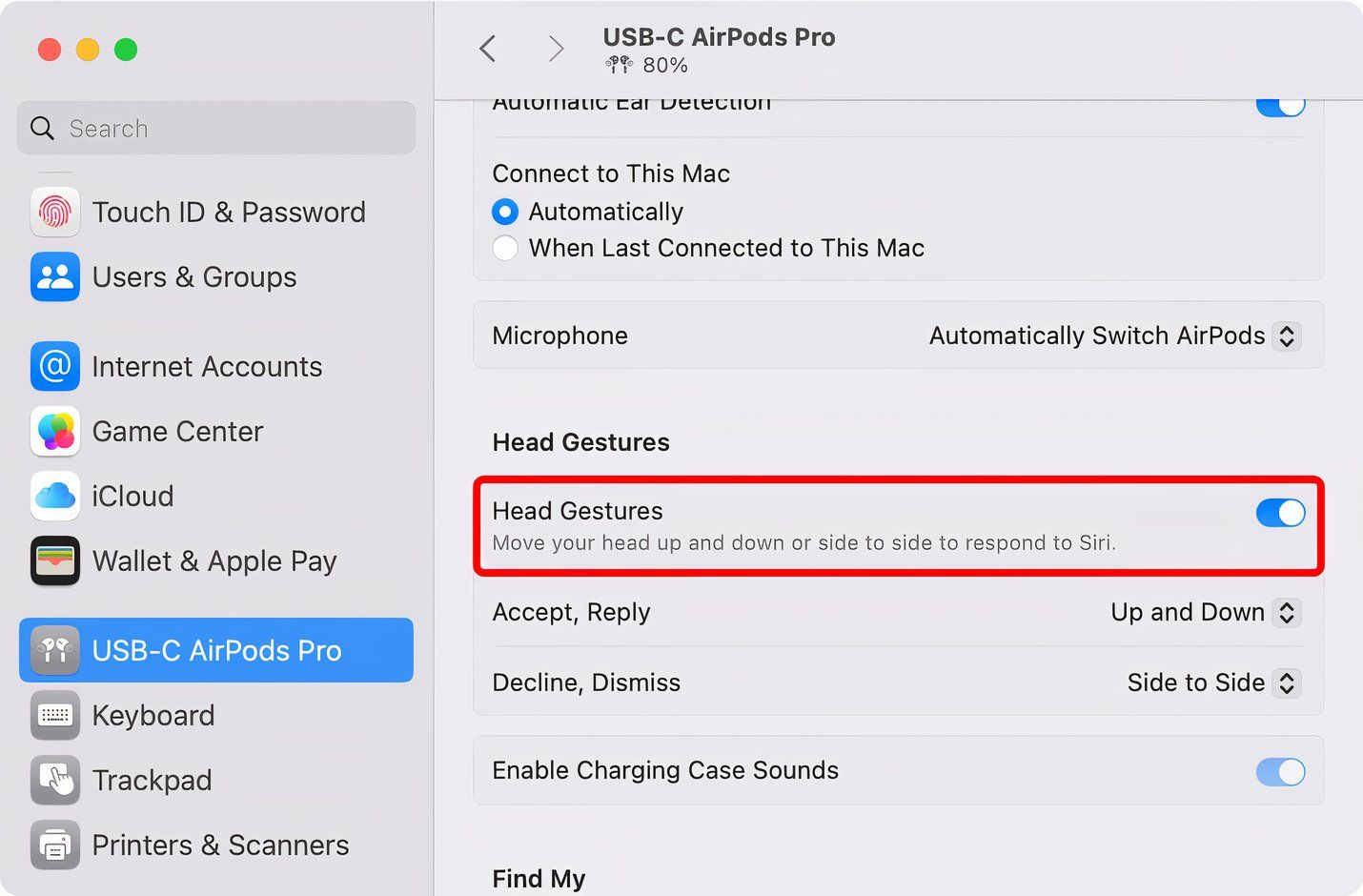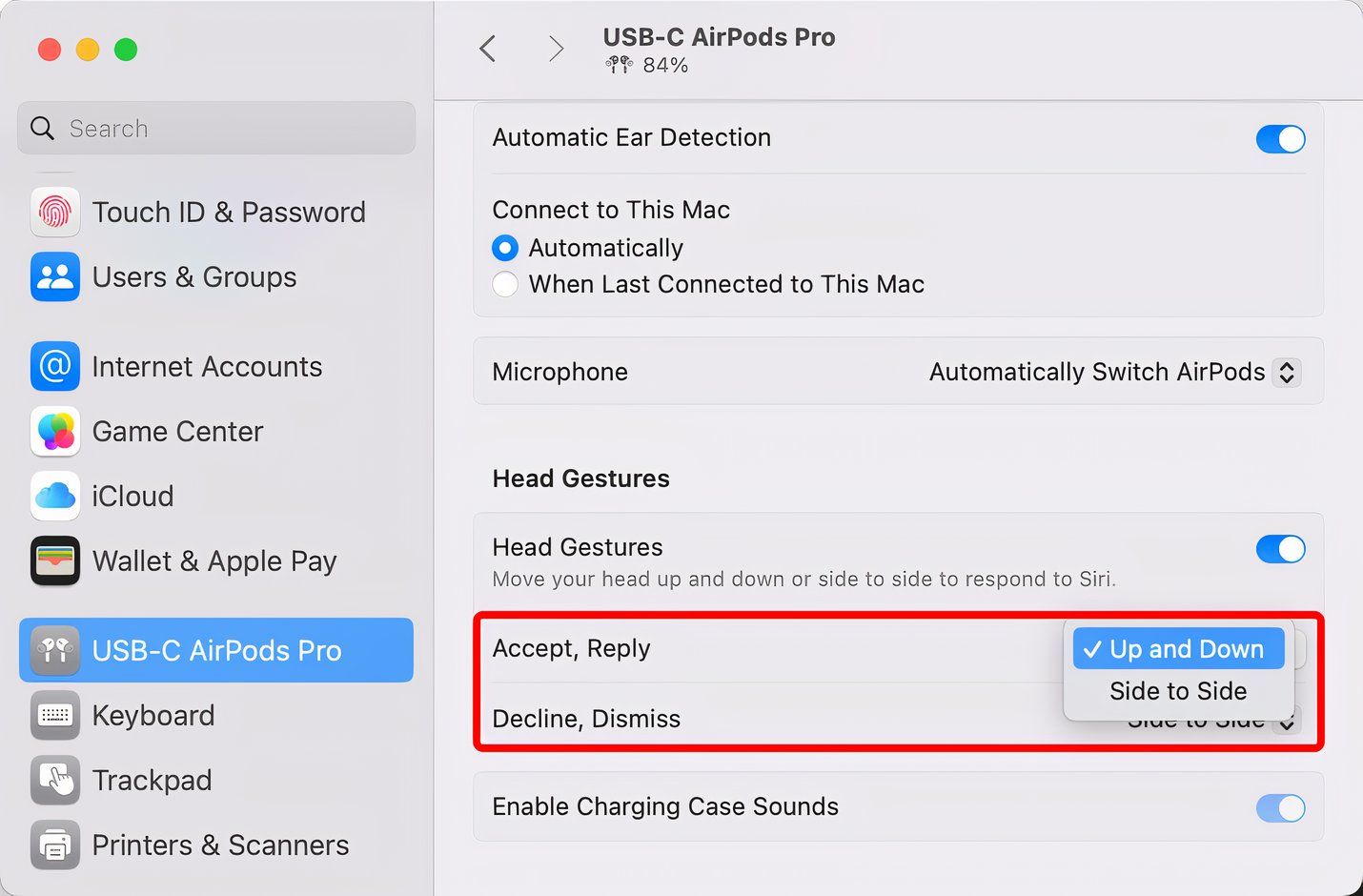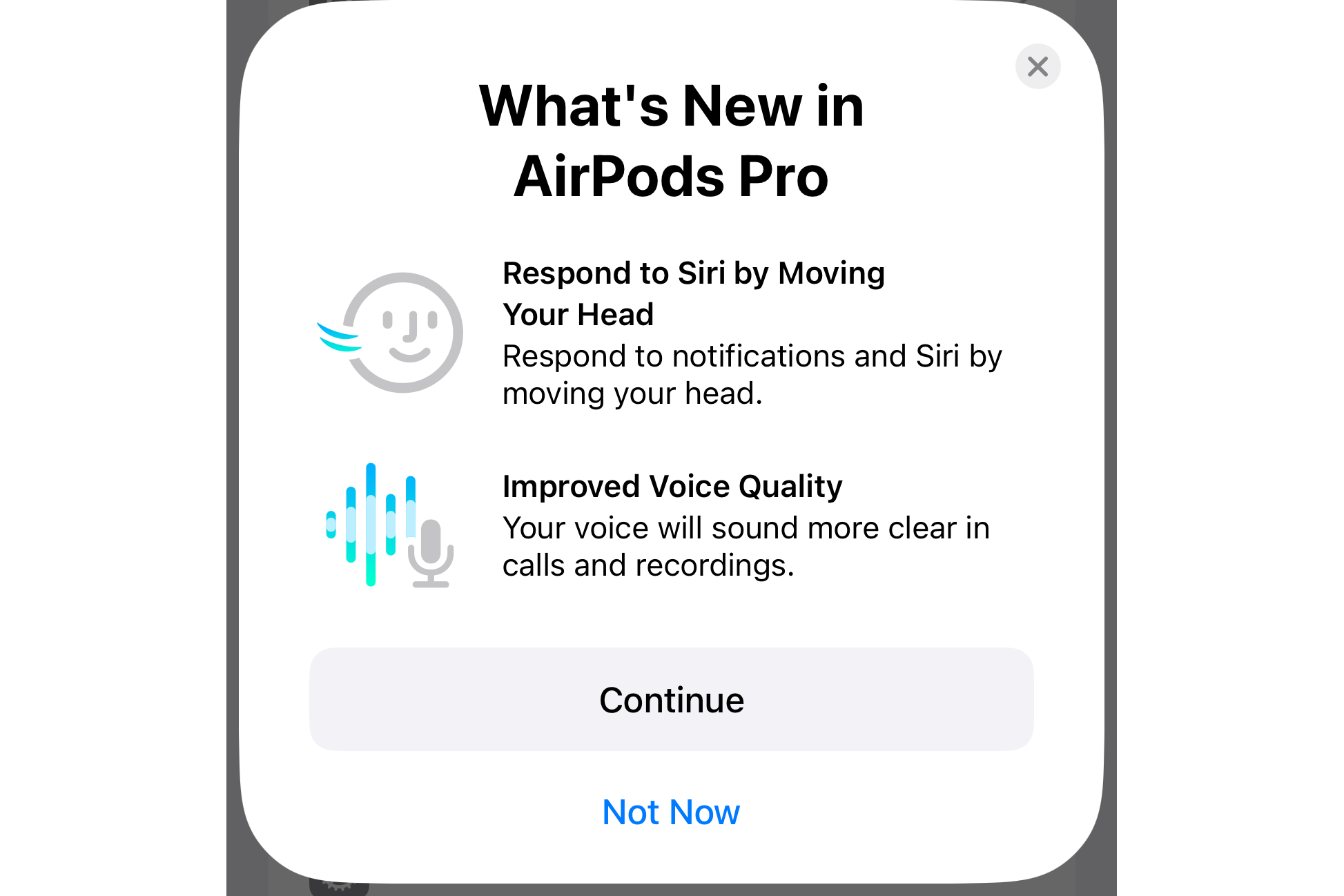Key Takeaways
- Second-generation AirPods, AirPods Pro 2, and AirPods 4 (both models) allow for hands-free calls and Siri replies with head gestures.
- Head gestures can be customized in Settings and provide a hands-free option for notifications.
- AirPods head gestures work well enough, but you can turn them off if you feel a bit self-conscious while randomly nodding and shaking your head.
Some AirPods models have integrated motion sensors that iOS 18 uses to detect head movement. This means you can respond to incoming calls and Siri notifications, hands-free, with simple gestures. Here’s how it works.
Which AirPods Are Compatible?
Head gestures require Apple’s enhanced H2 headphone chip in the second-generation AirPods (Lightning and USB-C versions), AirPods Pro 2, and AirPods 4 (ANC and non-ANC versions), along with firmware version 7A294 or later. No other AirPods models are compatible.
To check the firmware version of your AirPods, connect them to your iPhone, launch Settings, select your AirPods, and scroll down to find the firmware version in the About section.
To update your AirPods to the latest firmware, connect them to your iPhone, iPad, or Mac, put the earbuds in their charging case, and close the lid but leave the case plugged into power. Your device should download and install the latest AirPods firmware overnight.
Head gestures are unsupported when using AirPods as regular Bluetooth earbuds (without the smarts) on Android and other non-Apple platforms.
Head gestures require that your AirPods be paired with an iPhone running iOS 18.0 or later, an iPad powered by iPadOS 18.0 or later, or a Mac with macOS Sequoia 15.0 or later.
You can see your current iOS or iPadOS version number in Settings > General > About > iOS Version. To check which macOS version your Mac currently uses, navigate to System Settings > General > About, then find the version number displayed in the macOS section.
To update your iPhone, iPad, and Mac to the latest operating system software, venture into Settings > General Software Update on your iPhone and iPad and System Settings > General > Software Update on your Mac, then follow the onscreen instructions.
What Are the Gestures?
Head gestures are natural. To accept an incoming call, tilt your head up and down in a simple “yes” gesture. Conversely, move your head left to right in a “no” gesture to decline a call.
To accept or decline calls with head gestures, be sure to set the
Announce Calls feature
in Settings > Siri > Announce Calls to an option other than “Never.”
Head gestures allow you to respond to Siri hands-free. When you hear the assistant announce a new message or notification, just nod your head up and down to reply to the message via dictation. To dismiss the notification, shake your head side-to-side.
Before you can open or dismiss notifications with head gestures, you must go to Settings > Siri > Announce Notifications and switch on “Announce Notifications.”
If “Reply Without Confirmation” is enabled in the Announce Notifications section of your Siri settings, the assistant will send your dictated message response immediately. Otherwise, Siri will read your response aloud, and then ask whether you’d like to send it or abort the operation. Nod your head to send the reply or shake your head to dismiss it.
Head gestures also let you respond to Siri’s confirmational Yes/No questions.
How to Enable and Customize Head Gestures
AirPods head gestures are enabled by default when you install iOS 18, iPadOS 18, and macOS Sequoia, but you can toggle the feature at will and customize how head shakes work.
Managing AirPods Head Gestures on an iPhone and iPad
Open the Settings app on your iPhone or iPad and select your connected AirPods below your Apple Account profile image at the top or go to the Bluetooth section and touch the “i” button next to their name. Next, scroll halfway down, choose the “Head Gestures” option, and toggle the Head Gestures switch to turn the feature on or off.
Below that are two additional options for head gestures. Select “Accept, Reply” and choose between “Up and Down” and “Side to Side” as the preferred head movement to accept phone calls and respond to notifications via Siri.
Conversely, choosing “Decline, Dismiss” lets you select a head gesture to decline calls and dismiss notifications that Siri reads aloud.
You can test your settings by choosing “Try Head Gestures.” You’ll be asked to move your head up and down or side to side, with audible confirmation when you trigger the gesture correctly.
Shaking your head while on the call won’t end it, but you can say ”
Hey Siri, hang up
” instead provided the Call Hang Up option is enabled in the Siri settings. Keep in mind that the other party will hear you saying this voice command before the call ends.
Managing AirPods Head Gestures on a Mac
To toggle and customize AirPods head gestures on a Mac, wear your earbuds and click “System Settings” in the Apple menu. In the System Settings window, select your AirPods near the bottom of the list, then scroll halfway down on the right and click the Head Gestures switch in the Head Gestures section to turn the feature on or off.
Below that, you can adjust how head gestures work. Click the menu next to “Accept, Reply” and select either “Up and Down” or “Side to Side” to set how you respond to calls with head movement. Repeat the steps for the menu next to “Decline, Dismiss.”
An audible chime plays every time you’ve successfully triggered a head gesture. You can also shake your head to stop Siri reading a notification that doesn’t interest you.
Are the Gestures Any Good?
I’ve tested head gestures with AirPods Pro 2 on my iPhone 16 Pro Max, iPad Pro, and MacBook Pro. Sometimes they didn’t work for FaceTime on my Intel-based Mac, but I’ve encountered no issues on my iPhone and iPad.
They even work for calls and notifications on the Apple Watch, and I’ve found them helpful for hands-free calling and messaging.
What Situations Do They Best Suit?
There are a few situations where you might be legitimately eager to respond to alerts and calls hands-free like when driving a car, riding a bike, waiting in lines, commuting, etc.
Head gestures are well-suited for accepting notifications when talking aloud is socially unacceptable, like on a lift ride, or when your hands are busy working out, grocery shopping, and so on.
More AirPods Goodies in iOS 18
iOS 18 brings other AirPods features like immersive spatial audio in compatible games like Need for Speed Mobile when using AirPods 3 and later, AirPods Max, or any AirPods Pro. Voice Isolation on the AirPods Pro 2 and later and AirPods 4 removes noise in your surroundings, like the wind blowing around you, bringing clearer audio for the listener.
And with Game Mode on your iPhone, your AirPods cut down on Bluetooth lag when gaming.
Last but not least, iOS 18 boosts voice quality when chatting with teammates and other players in games using your AirPods 4 or second-generation AirPods Pro and later with 16-bit, 48kHz audio (also benefiting audio recordings made with apps like Voice Notes).
It’s good to have options, but you don’t need to use head gestures if you’re concerned about how other people might perceive you when you start nodding and shaking your head out of the blue.
In that case, you can stop using head gestures or disable them altogether. And don’t worry; your existing AirPods press and hold controls and gestures, such as swiping to adjust the volume, remain available whether head gestures are enabled or not.











